The Best Trail Running Shoes for Ultimate Off-Road Comfort
There's a childlike joy to trail running. You're coursing through the woods, jumping over logs, getting dirty to your heart's delight. The mental benefits of being out in nature can land you a next-level runner's high.
But for those more used to running on concrete than dirt, all it takes is a few bad slips and slides in your regular sneakers to realize you might need to upgrade to a solid pair of trail running shoes.
What should you look for in a good pair?
"Traction seems like it should be most important," says Phil Kochik, owner of Seattle's Seven Hills Running Shop, which specializes in trail shoes. But actually, he says, it only comes up third on his checklist when he's helping customers buy their first pair. "If you have a shoe that is uncomfortable, then doesn’t matter if you have great traction—that won't save the experience." And, he adds, any trail shoe with even a little bit of grip is going to instantly feel like a win when you're first transitioning from road shoes.
- Phil Kochik, owner of Seattle trail running specialty story Seven Hills Running Shop
Instead, Kochik suggests primarily focusing on fit and cushioning, then thinking of traction as the cherry on top.
Best trail running shoes at a glance
If you want a familiar feel: Brooks Cascadia 16
If you want something for the roads, too: Altra Outroad
If you want to tackle all kinds of terrain: Adidas TERREX Agravic Flow 2
If you have narrow feet: La Sportiva Akasha II
If you don't want to feel so much shoe: Hoka Speedgoat 5
If you want a lighter version of your fave hiking shoe: Moab Speed GORE-TEX® X Sweaty Betty
If you’re looking to go the distance: Salomon Pulsar Trail
If you want a spring in your step: Saucony Peregrine 12
{{post.sponsorText}}
First, find the right fit
Many road runners first take to the trails when they're looking to amp up their mileage and tackle ultra marathon distances (meaning, anything longer than 26.2 miles). But even if you want a more moderate amount of miles, keep in mind that you'll likely be on your feet for longer than you're used to—your pace is going to be much slower as you navigate technical terrain and elevation changes. A 10K loop could take twice as much time on the trails as it would on the roads.
"You gotta get the right fit for the long haul," says Kochik.
Don't overthink it: You're likely to find the most success with something that feels like your regular road shoes. And no matter what surfaces you're running on, the latest research says the best shoes for you are likely the ones that are the most comfortable. Trail shoes might just have a bit of a stiffer sole (to help you run over rocky terrain without feeling it so much) and a bit more stability (to keep your foot supported no matter the angle you land on).
Decide how much cushioning you want
As running trends have swung from minimalist to maximalist shoes and everything in between, there's now a whole gamut of options to choose from. Kochik says it comes down to preference, with one caveat: If you're new to the trails, you might want to choose something with less cushioning so you can feel the ground beneath your feet really well until you get your "trail legs."
"You're gonna feel a little out of sorts out there for the first few months," he says. Until your muscle memory gets used to roots, rocks, and steep downhill declines, "a shoe that helps you feel more nimble is the better way to go."
Remember that a dirt trail is likely to be more forgiving on your joints than concrete roads. Consider your go-to local routes, and whether they're more likely to be covered in soft pine needles, or are mainly made up of dense rock slabs.
And if you love your max-cushioned road shoes, there are plenty of similar options for the trail, too. Just know that these models might feel a tad strange at first until the padding packs down and forms to your foot after a few runs, says Kochik.
Consider the details: traction, toe guards & GORE-TEX
Once you've found shoes that feel good and offer the right amount of cushion, then you can consider the tread. Bigger lugs (the cleats sticking out of the bottom of the sole) will help you take on the muddiest routes—and even slippery city streets after a snow storm. If you're running on slick, wet trails, Kochik says the gold standard of sticky rubber soles is Vibram Megagrip, a durable bottom found in several different brands.
For those of us who are, ahem, a bit clumsier, one bonus of many trail shoes is the toe guard at the front of the shoe, which will help shield you from stubbing your foot. Check how thick the rubber is at the front for that extra protection.
One feature you'll see on some trail running shoes is waterproof GORE-TEX. Know that, while wearing these, your feet will still get wet if you run through streams or in a downpour (the water will come in between the laces and around your ankle), and the GORE-TEX will actually mean it takes longer for your feet to dry out. But Kochik says the material can come in handy to keep your feet warmer if you're running in snow or extremely cold temperatures. Just know that the upper will feel stiffer.
Test them out
You can try out a few pairs of trail shoes at your local running store with a little jog on the sidewalk just like you would with any road shoe. But you won't truly know how trail shoes perform until you take them for a spin off-road. Fortunately, these days, most stores—online and IRL ones—have generous return policies. Kochik just suggests giving shoes two or three tries before you take them back, especially if your body isn't yet used to the feel of trail running.
Don't worry, he says, "You can even return them all dirty."
Expert- and editor-recommended pairs to check out
If you want a familiar feel
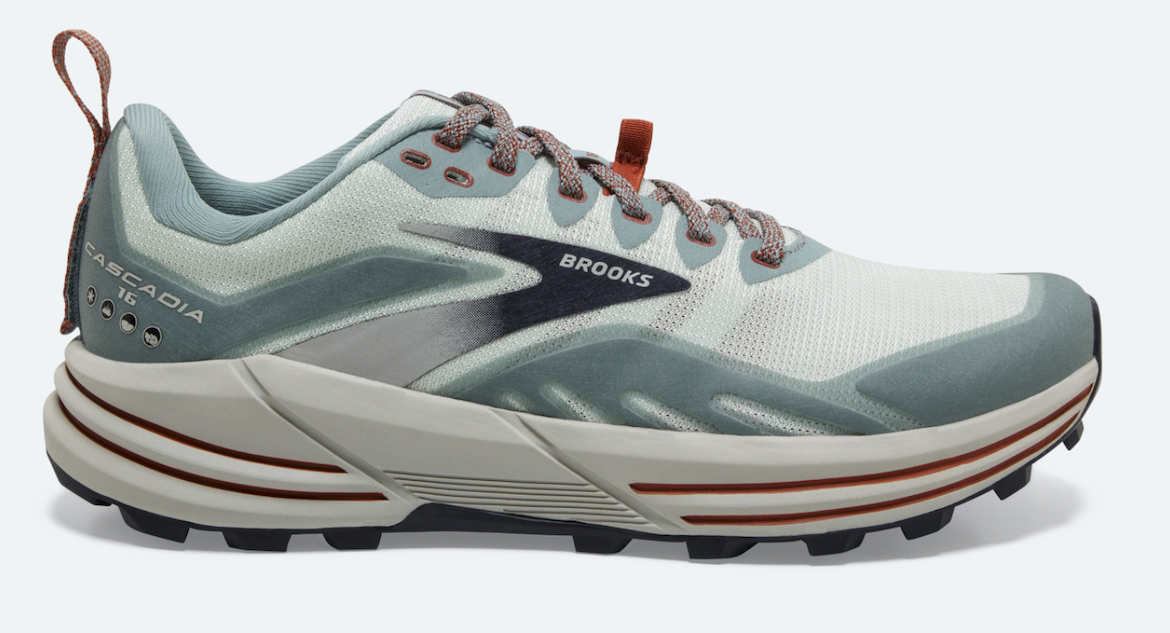
A tried-and-true classic, Kochik describes the Brooks Cascadia as a “longstanding trail shoe that started it all.” Now on its 16th version, he says these were the first trail shoes that felt comfortable right away, just like a road shoe—and they still offer that same magic today. He often recommends them to trail newbies. ”They’re like other Brooks, but on the bottoms they’ve got added traction.”
If you want something for the roads, too
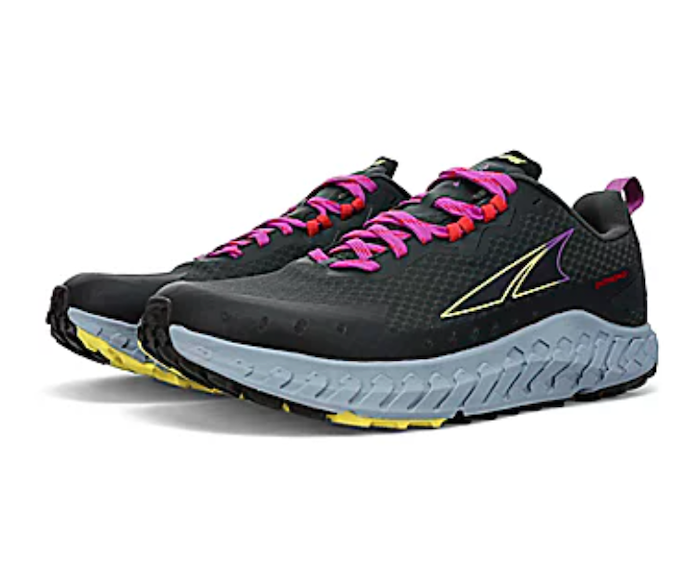
Not yet sure if you’re ready to commit to a shoe just for the trails? Check out this model, which will be launching any day now. Meant for people who live in cities, but hit the trails every so often, this shoe transitions right from asphalt to dirt with a completely natural feel on either surface. Altra is known for its zero heel drop, so your heel and toes are exactly in line horizontally—this is designed to promote proper form, but can be tough to get used to if you’ve never tried it before.
Altras also typically feature an extra wide forefoot so there’s plenty of room for your toes to spread out as you flow through your stride, which is still mainly true here. However, this model has a slightly snugger, less bulky fit than others by the brand. Overall, the shoe runs on the smaller side, so you might want to size up.
If you want to tackle all kinds of terrain
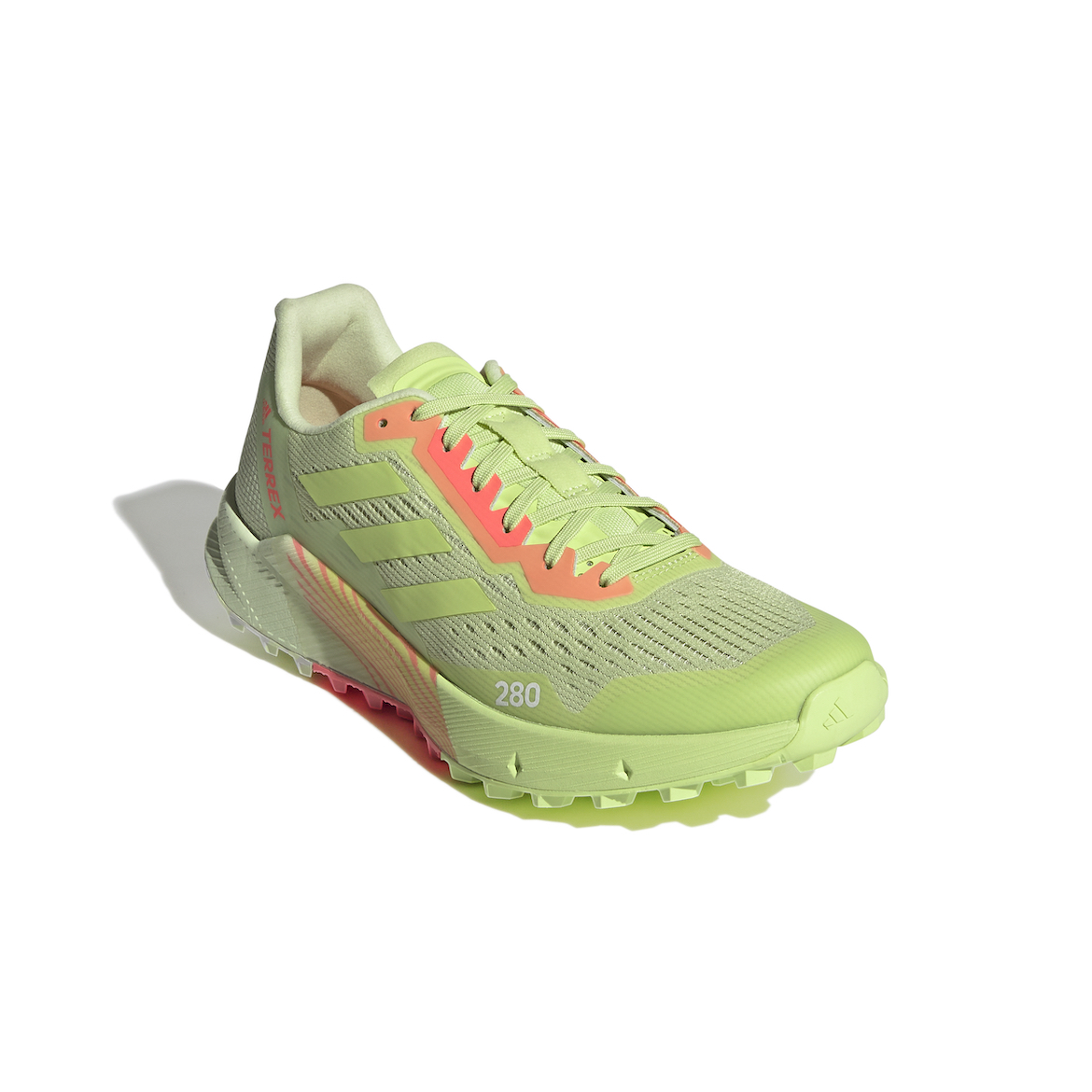
Meant for running a variety of trails, the aggressive lugs on this style give a good grip on a variety of terrain—wet rocks, leaf-covered hills, dirt paths—and still feel stable. The sturdy midsole made with EVA foam easily handles technical (aka rocky and root-covered) trails, but doesn’t feel like so much shoe you can’t sense the ground beneath you. The back sits a little high in the ankle, which can help keep dirt out, but if you have a shorter heel, it could dig into your Achilles a bit.
If you have narrow feet
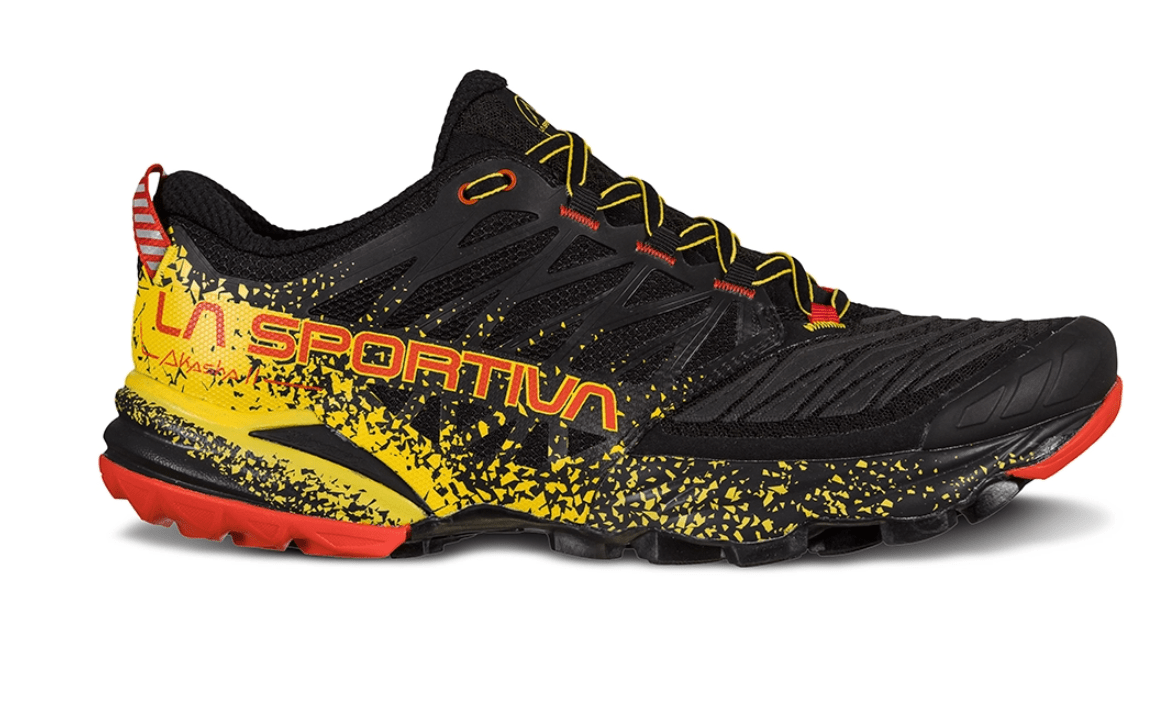
Kochik says this model is a go-to recommendation for customers with narrow feet. Designed to handle tricky technical terrain, these are made for serious days in serious mountains. The airy mesh upper provides a snug fit, with overlays for added protection, making for a breathable—but durable—feel that doesn’t grow too loose, even as the miles add up.
If you don't want to feel so much shoe
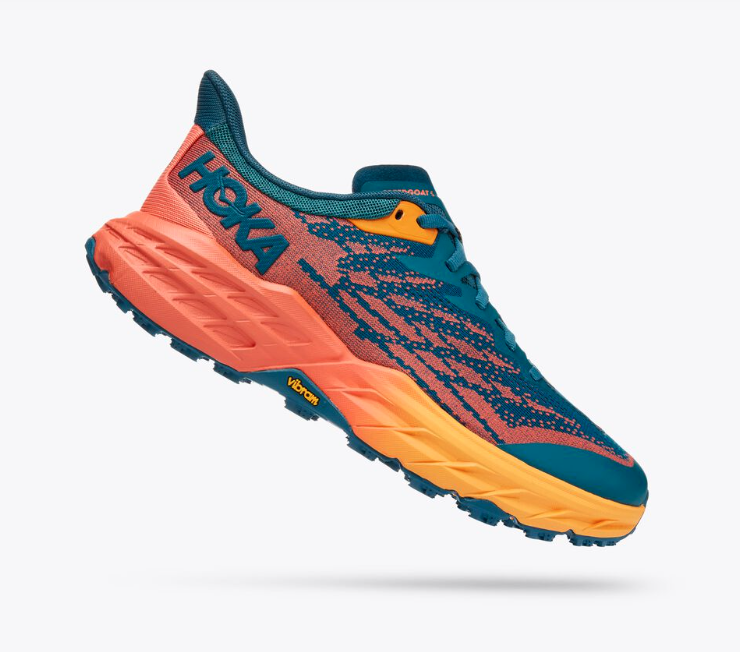
The latest edition of this shoe isn’t as thick-feeling as the traditional maximalist style Hoka first became known for—you’re not quite so far off the ground. But it’s even lighter than earlier editions of this style, and also heartier with a sturdy mesh upper. Kochik says there’s a good chance of it working well on many people’s feet. Bonus: It’s got Vibram Megagrip rubber outsole for ultimate traction.
If you want a lighter version of your fave hiking shoe
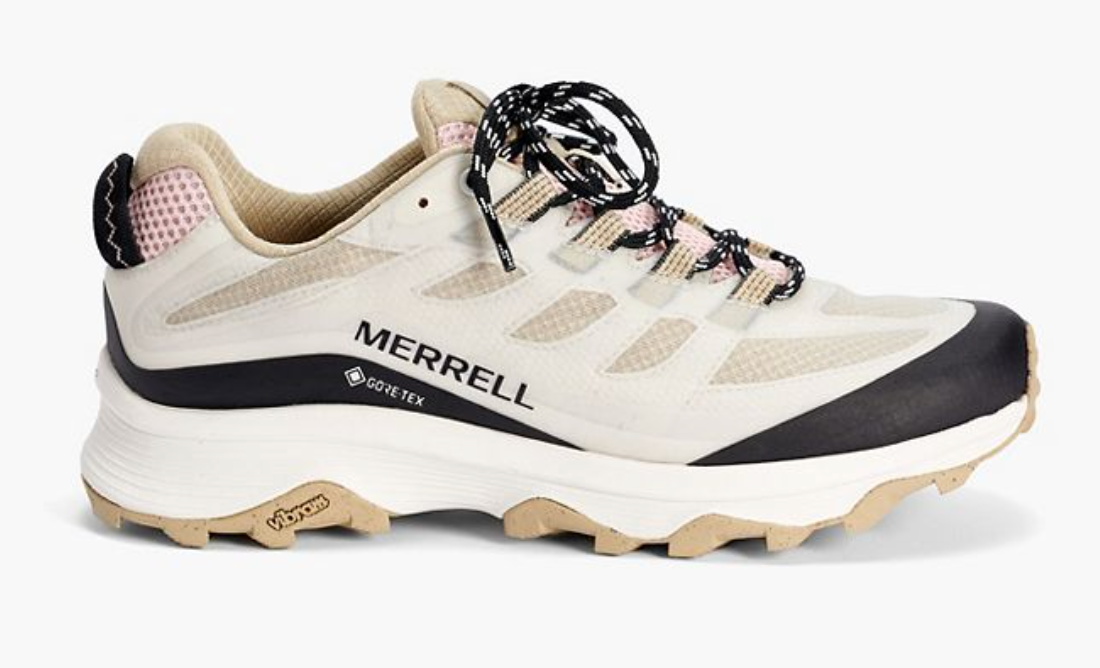
Well+Good’s associate commerce editor Francesca Krempa swears by Merrell hiking boots—they’re the only brand she’ll wear. “I was super stoked to see them team up with Sweaty Betty (another one of my faves),” she says. “These sneaks have all the makings of a sturdy hiking boot, just in a lighter, flightier form. I also love that they’re made from more sustainable materials. Fitting, considering they’re made to be in nature.” These kicks are as tough as any other Merrell pair, with sturdy tread and a ton of arch support, but airier and more nimble.
If you’re looking to go the distance
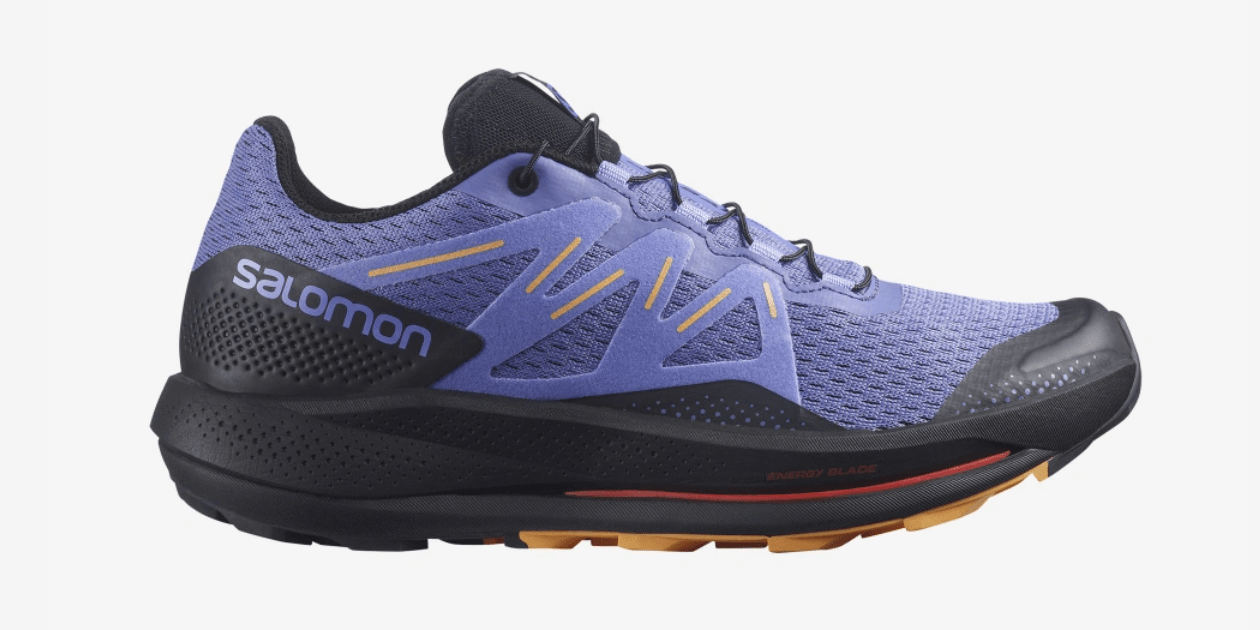
Let’s be honest: Part of what we all love about sneakers is the statement they make—what a particular style tells the world about who we are. And when you put on a pair of Salomon’s, you’re announcing yourself as a legit trail runner. The French brand has a reputation for being the go-to pick of top athletes like Courtney Dauwalter and Rickey Gates.
Although Salomon considers this pair to offer a medium amount of foot protection, it feels like a mini-fortress with its maximum cushioning, strong grip, and rubber all around the bottom edge to protect your tootsies from any errant kicks and missteps. It also offers a pulley-like quick lace system that lets you avoid the need to tie any pesky laces that might come undone mid-run. Warning: They’re just slightly on the narrower side.
If you want a spring in your step
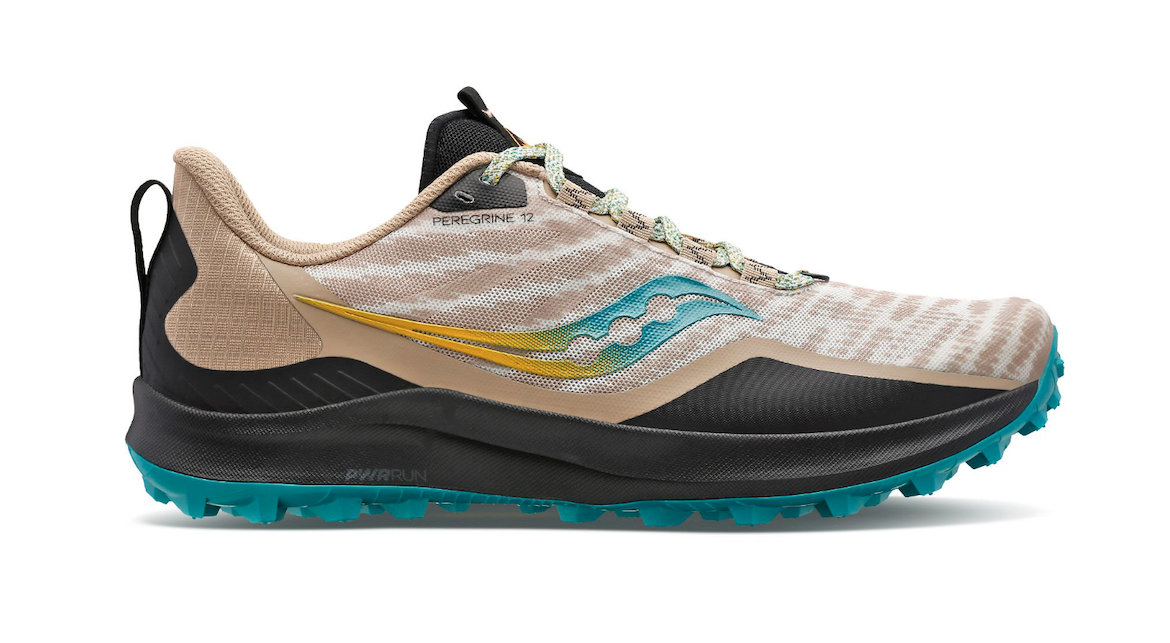
These fan-favorite shoes might be the epitome of a great out-of-the-box feel. Without any “breaking in” required, they have that ideal balance of being supportive but not stiff. The ride has a satisfyingly springy toe-off, whether you’re heading out for an easy loop or logging major miles in an attempt to place at your next race.
Want to be the first to hear about the latest (and greatest) SHOP product drops, custom collections, discounts, and more? Sign up to have the intel delivered straight to your inbox.
Loading More Posts...